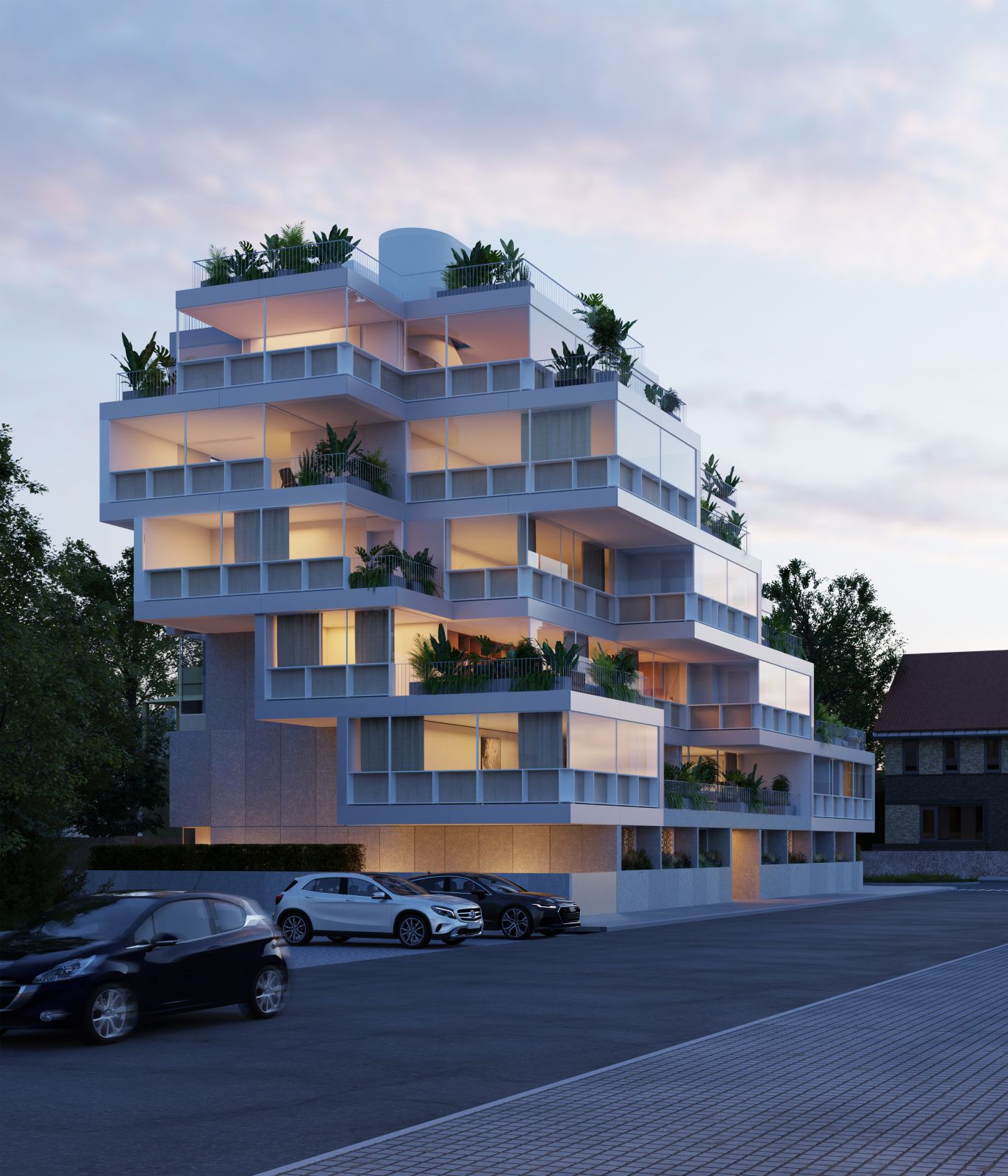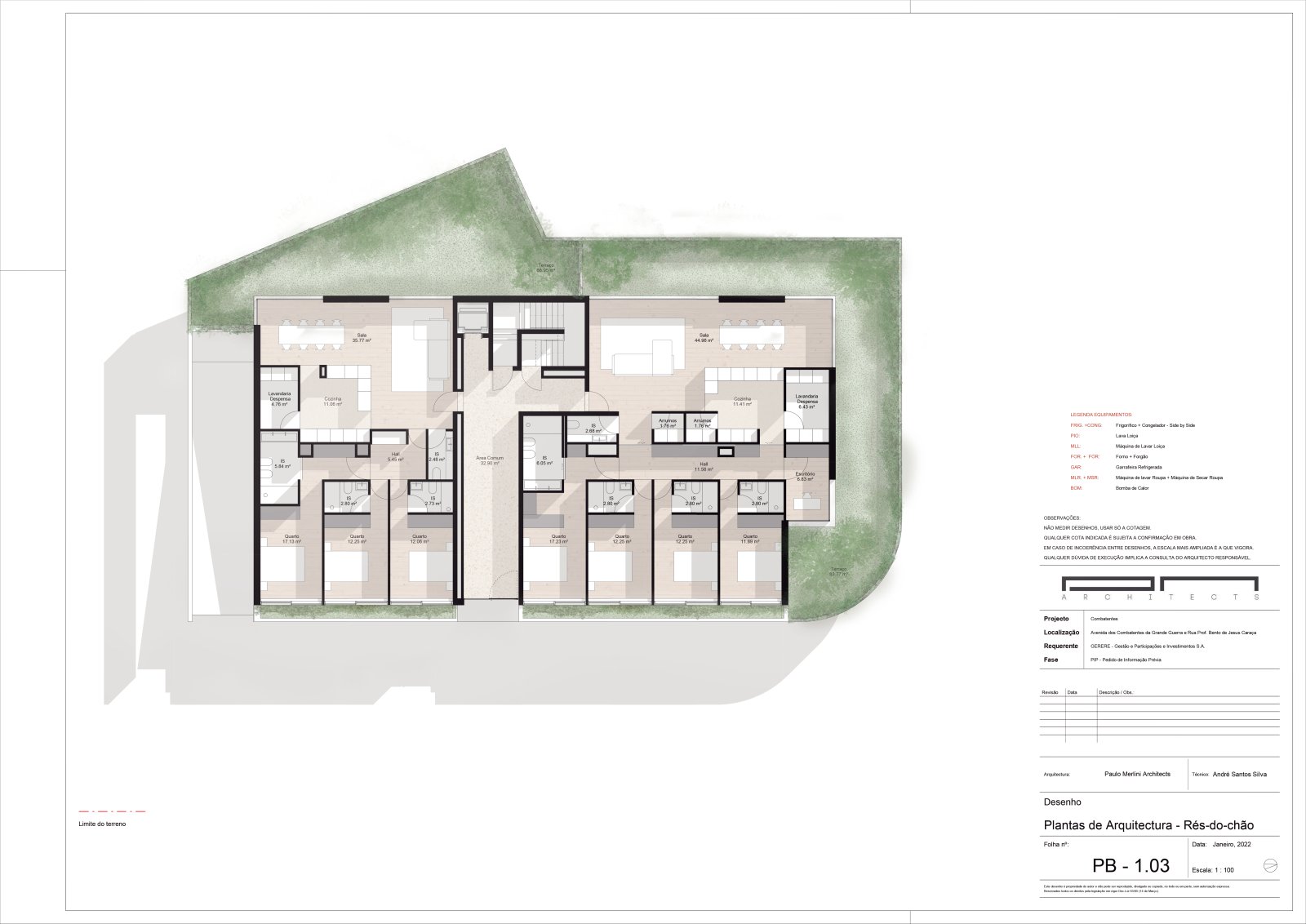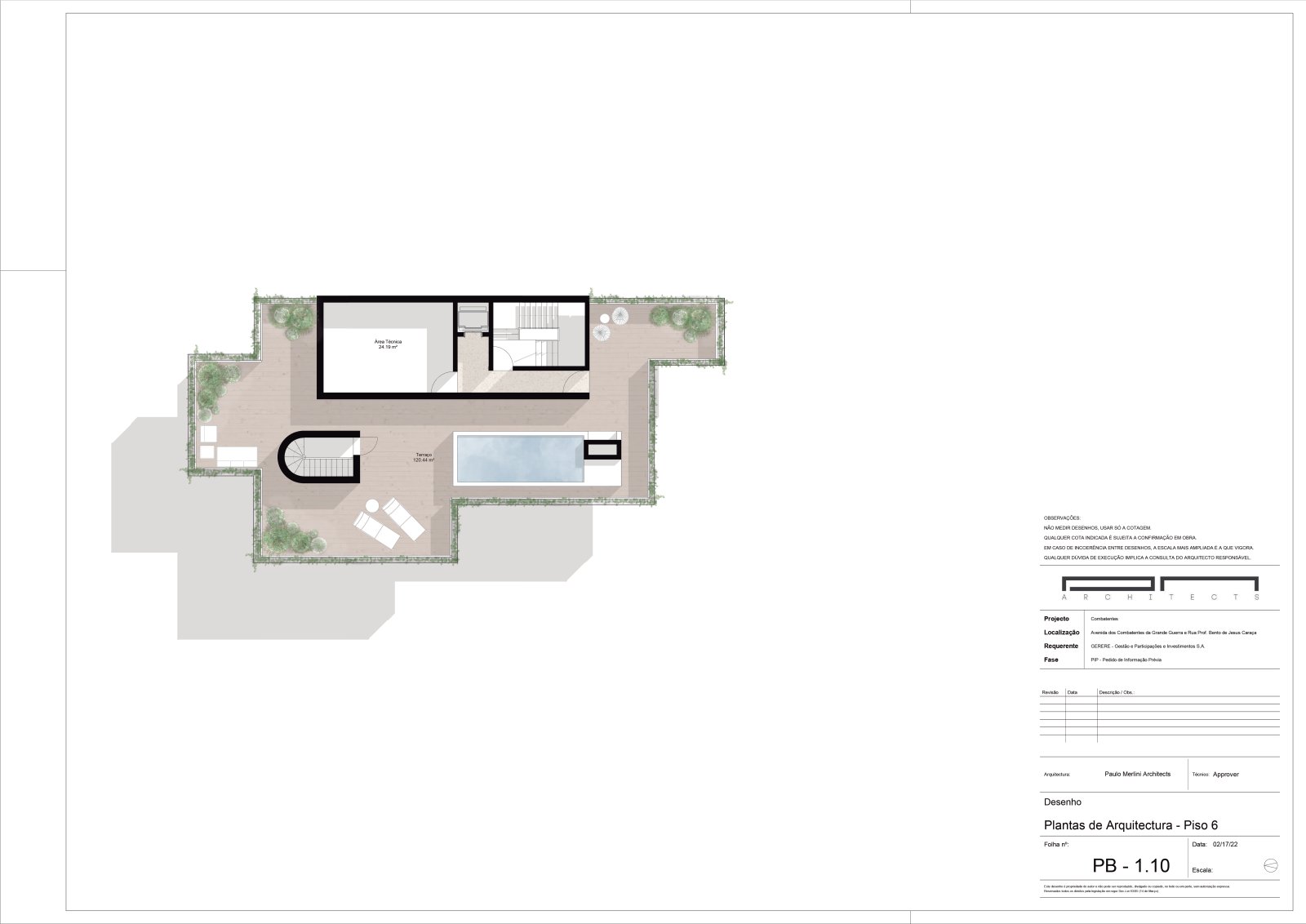After acquiring a 592 sq/m site on one of the most characteristic avenues in the city of Oporto, the clients approached us with the intention of designing a collective housing building for the upper middle class, with two basic premises: the valorization of the site, and that all apartments be complemented with generous terraces.
As always, and understanding that architecture is part of an economic and social mechanism bigger than itself, we sought to develop a timeless building that would add value to the site and ensure the highest possible economic profitability. Considering that all architectural interventions express themselves as cells belonging to a larger organism, and as such, depend on a good synergic relationship with their surroundings, we proceeded to the analysis of the site’s constraints.

Regarding the relationship with the urban grid, we realized that the land was in a very specific situation. Located in the transition zone between the single-family housing scale that characterizes the Avenida dos Combatentes and the multi-family housing scale that flanks the streets of Bento Jesus Caraça and Costa Cabral, we assumed that any proposal for the site would have to express, in a fluid way, this transition of scales.
We had one last piece of the puzzle on hand to stitch these two realities together, as this is the only vacant lot in the vicinity. Complementarily we analyze the adjacent road and pedestrian infrastructures. Analyzing the intensity of the road flow, we concluded that car access should be through Rua Bento Jesus Caraça. With a lower level of traffic, and with the added value of the wide sidewalk and adjacent parking lane, it would not constrain circulation.

In terms of pedestrian access to the building, we created two distinct entrances. One, with main entrance characteristics, which takes advantage of the pedestrian way that develops inside the block and connects the subway station with the street Bento Jesus Caraça, and another of secondary character related with Avenida dos Combatentes. We analyzed the relationship of the terrain to the solar exposure, and all associated legal constraints.
The possible implantation defined by the fashion of the site’s streets, and legal limits to the neighbors resulted in a deployment patch of 335 sq/m. In terms of height, the PDM allowed the construction of a volume up to 21m in height, equivalent to 7 floors, however, in terms of soil qualification, although it is outside the zone defined as urbanistic and architectural heritage area in the PDM, we know that the law allows the land to be analyzed, by the respective entities, as an integral part of it.


When acquiring the land, the clients were aware of the constraints regarding the maximum height allowed by the competent authorities, and considered that they could build a maximum area of 1240 sq/m. However, we were sure that with a creative approach to the legislation, and with respect for the surrounding urban fabric, we would be able to enhance this area.
We started with a small-scale module (3x3m) spreading it over the permitted footprint and piling it up to the limits of the 21m allowed height. With the puzzle assembled, we proceeded to remove modules in order to ensure respect for the solar exposure on the adjacent dwellings, and for the scale of Avenida dos Combatentes.

Through this volumetric game, we not only create a unique volumetry in the city, which respects the surrounding buildings in terms of solar exposure and ensures the transition of scales of the urban mesh. But we also gain more fronts for the apartments, increasing their level of sun exposure, views of the landscape, and generous terraces with a new level of visual relation between them.
Additionally, and after further analysis of the legislation, we found an article in CRMP that allows the application of cantilevered bodies on the facade, which allowed us to increase the gross area by 154m2, without altering the general aesthetics of the building or the respect for the surroundings. In the end we achieved a 47% increase in rentable area (873m2) over the construction area initially considered by the clients. Source by Paulo Merlini Architects.

- Location: Porto, Portugal
- Architect: Paulo Merlini Architects
- GFA: 3285m2
- Year: 2020
- Images: Courtesy of Paulo Merlini Architects










